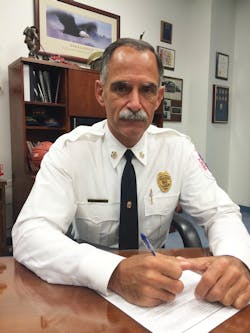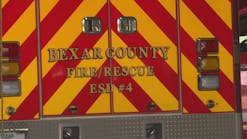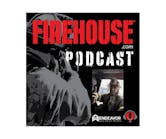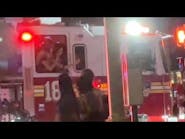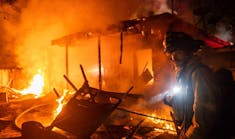As public safety professionals (paid or volunteer), we’re supposed to be good chaos managers. While I know, and have tried to emulate, many of the great command officers out there, I also know chiefs who sound great on the radio but who are actually doing a terrible job managing the incident. Instead of managing the chaos, these chiefs are being managed by the chaos. They tend to run around a lot and have typically gained the unenviable label of CHAOS: Chief Has Arrived On Scene.
I suspect you won’t see the word chaos in anybody’s job description, but when you break it all down, chaos management is really the essence of what we do. Becoming a great chaos manager is something of an art, and it takes training, development, practice and sometimes some luck to develop the charisma and time- and task-management skills necessary to get there.
Chaos rarely occurs in linear or stovepipe channels. Once there’s unchecked chaos, it usually permeates the entire situation or location. This, therefore, requires a firm grasp on the ability to multitask while remaining calm and reassuring, and exercising sound best practices for command and control (e.g., fixed command post, using a tactical worksheet or some form of checklist).
An overall “command presence” is one big part of what separates the great incident commanders (ICs) from those who themselves become labeled CHAOS. Command presence in and of itself, however, is not enough. Those with articulated, observable command presence but who lack the multitasking capability are the ones who are likely being managed by the chaos. They may seem calm and reassuring, but the incident is spiraling out of control around them. The combination of multitask management and command presence, combined with good crew management skills, creates the pattern needed to succeed.
My story
Each of our personal stories likely has some impact on whether we become on-scene chaos or we manage on-scene chaos. My personal success story starts well before my start in the fire service 35 years ago, with my father’s entrance into World War II in 1943. After being shot and wounded in the Pacific theater and receiving the Purple Heart, he was discharged in 1952 at which time he moved back to Washington, D.C. He became a U.S. Postal worker, met my mother, married and then somewhere along the way became ordained as a Baptist minister. He was a retired Marine sergeant, mailman and preacher of a small church concurrently for about 32 years. You can just IMAGINE what my house was like!
My dad had nothing to do with the fire service; however, the militaristic/biblical/service-oriented life he lived became my life. In so many ways, he managed his and other people’s chaos, every day. So when people ask, “How did you learn to manage … [this or that],” my answer is two-fold: 1) upbringing and 2) training, education and development. I recognize that you can have the best or worst upbringing and the most or least training and education and still end up differently than the next person. That’s life. Almost nothing works the same way for every person.
Back to growing up. I am 100 percent sure that I had attention deficit disorder (ADD). I never had an official diagnosis, but the research my wife and I have done pretty much confirms it. The research also suggests that many of the highest performing people you know, including many political and sports figures, likely have or had ADD. I firmly believe that my ability to multitask, perform and manage at MANY levels simultaneously has been honed under the undiagnosed guise of ADD. It is that level of multitasking that I suggest needs development for the successful fire/EMS officer. So many things happen so quickly in our business that your ability to manage all of those things effectively in a linear sense would be dysfunctional, ultimately creating and embroiling you in stovepipes of chaos.
When chaos strikes …
At some point, you’ll be driving down the road having a leisurely conversation with a coworker or significant other and chaos will strike. On the radio: “Beep, beep, beep, 1201 West Fortune St., fire reported on the second floor with people trapped. Engines 1, 2, 3, 4, trucks 1, 2, rescue squad 1, medic 1, and Battalion Chief 1 respond on talk-group 3.”
You’re close. You know the area well and you’re close enough to make a difference. The lights come on, the siren blares, your foot hits the gas pedal. I consider myself always “in the zone,” but what exactly does that mean? Well, here’s what it looks like: Your front-seat passenger presses their imaginary brake pedal, stresses at the backed-up traffic and presses the “warble” button on the siren box. You bellow out, “DON’T TOUCH MY SIREN!” and they tell you to watch for this, watch for that. When I was a “technician,” this is the point I’d tell my lieutenant, “Just look down at the map book, lieutenant. I got this.”
The “zone” I’m talking about may at times be considered a Superman complex. It’s the point where I’m focused on multiple critical things/tasks—vehicular traffic, pedestrians, radio traffic (maybe on multiple talk groups) and visual queues—all the while pulling back into the brain on running routes, known preplan information, etc. Can I do them all perfectly? Probably not, but my ADD mind allows me to multitask, and my career development has taught me to filter what’s important and what’s likely not. Some people operate well with an aide; some don’t. Aides ARE a critical component to successful scene management, even if it’s an ad hoc aide. Just don’t touch my siren!
Once you arrive on the scene, you establish the command post and begin the dance. I have previously referred to the 10 by 10 command box. Whether that’s the confines of sitting in the vehicle or stretched out with cones or tape to the rear of a vehicle, creating that 10 by 10 box has been critical for my success as a command officer. The box keeps me in one place. All too often, command officers want to drift, check out this or that, put my personal eyes on it, etc. The real (or imaginary) 10 by 10 barrier also keeps others at bay. I used to use four collapsible orange cones in my battalion chief’s buggy. More than once, I’d see people standing at the edge of the imaginary barrier between cones, accomplishing exactly what I needed accomplished. Making room for those who really needed to be there, and probably more importantly, giving me room to THINK and LISTEN.
Listening is one of those arts that many of our folks have either never “had” to worry about or that they are losing to a bevy of electronic leashes. I grew up in the era where the radio was the ONLY notification system. I was in a fire station recently when the radio beeps began to blare, and I stopped talking, listened, then kept going. One of the “young guys” said, “Chief, we don’t need to listen to that radio unless those red lights come on.” If I could have choked him then, I would have. Listening is KEY to situational awareness all around you, and key to picking up bits and pieces that the less attuned people will miss.
One more zone factor to address: responsiveness. Whether it’s one-on-one at the emergency scene or through answering emails and telephone/text/radio messages, it is imperative that you are responsive in a timely fashion to those who ask something of you. All too often, people aren’t “in the zone” when something critical comes through, and that critical “thing” gets lost in poor time management. I’ll also admit here a mild case of OCD. I pretty much answer phones and emails 24 hours a day. If I don’t handle it when I see or think about it, it will never get done.
Being present
This is all about being present, whether you call it ADD, OCD, being “in the zone” or something else. Ultimately our job is to bring calm to the chaos. We can’t bring that calm if we can’t manage that chaos. We cannot allow chaos to stand for Chief Has Arrived On Scene. Take time now to develop your listening skills, and to grow the time- and task-management skills that will allow you to float across subjects, radio talk groups and decision matrixes, all the while being able to think through the tactical details and pushing back thoughts about dinner. Are you managing the chaos or is the chaos managing you?

Marc S. Bashoor
MARC S. BASHOOR joined the fire service in 1981. In 2017, he retired as fire chief of Prince George’s County, MD, Fire/EMS, the largest combination department in North America. His progressive community-based approach led to record hiring and a strategic apparatus replacement plan.
Twitter: @ChiefBashoor
Email: [email protected]
